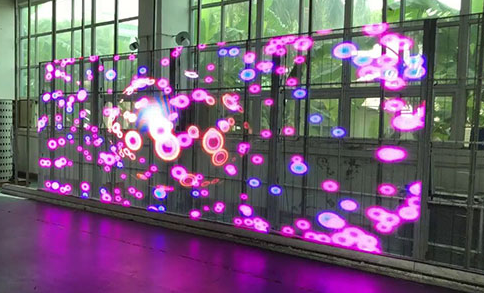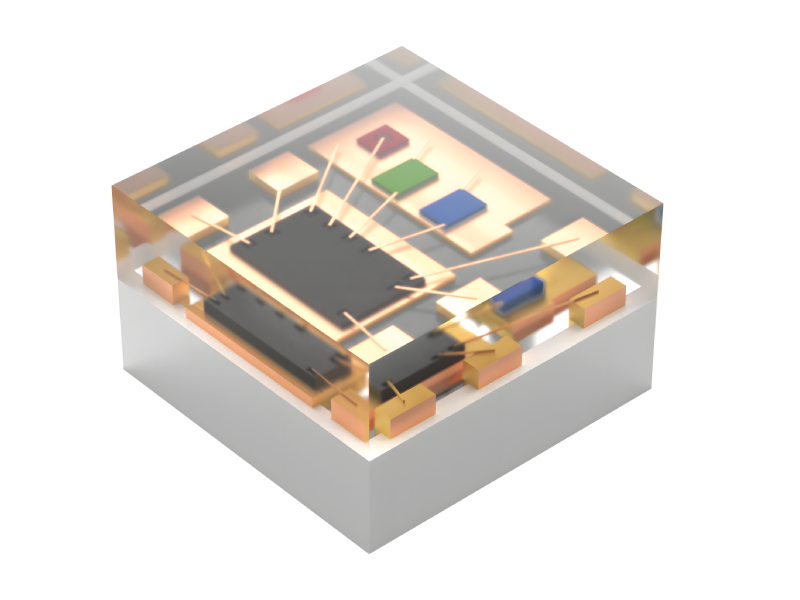A transparent LED display often refers to a type of LED display made of bars of LEDs for high transparency, and displays gorgeous transparent looking content to attract the audiences. It is an extended application of LED displays, and is mainly used in the fields of architectural glass curtain walls, windows, etc. In this article, we will introduce transparent LED display in five aspects , technology principle, manufacturing, cost, installation, and market analysis.

The technology principle of transparent LED display is the same as that of conventional LED display, that is, LED power supply provides power, control system is responsible for conveying instructions, driver IC provides display program, and LEDs are responsible for displaying various information. It is fixed into a complete transparent LED display unit through PCB board and bottom shell mask, which is what we call cabinet. However, the cabinet panel adopts innovative technology in structural design and related processes. The light strips are designed as hollow structures one by one, just like the shutter structure, which makes the screen transparent, which is also the biggest difference from conventional LED displays.
In terms of content material playback, in addition to achieving the effect of conventional LED screens, it can also play transparent images, which is its biggest advantage. Since the black part does not emit light during playback, the effect is like transparent, so the background color of the advertising content does not need to be changed to black.
The main components of transparent LED display are: light board, power supply, control card, connecting light. The main production process of transparent LED display is as follows:
The LED lamp beads are pasted on the light strip of the PCB to form pixels. The pixel pitch we often say is the distance between two adjacent lamp beads, and the resolution is the number of lamp beads per unit area. When patching, pay attention to the lamp, do not paste it upside down, and do not paste less.
Check the patch of the light board to see if there is any light loss or poor soldering.
Align the finished LED bars and the frame and screw them in place. The production process of the transparent LED display driver board is: SMD, drive cable connector, power connector welding, capacitor welding, and driver IC welding.
The driver board is inserted into the light board, soldered, and QC test is performed. This includes a 72-hour lighting aging test, including 48 hours of red, white, blue, and green light, to check for poor soldering or dead lamp beads for repair and replacement. The video content is played for another 24 hours. If color cast or brightness inconsistency is found, balance adjustments will be made. Ensure that the LED display is perfectly presented and runs stably before shipment.
How much does a square meter of transparent LED display cost actually refers to the price of the screen body. According to market surveys, the price of transparent LED display bodies is mostly concentrated between 5,000 and 10,000 yuan per square meter.
Pixel pitch is an important element that affects the cost of a transparent LED display. For example, a P7.8 transparent LED display has 16436 LEDs per square meters while a P10.4 transparent LED display has only 9246 LEDs per square meters.
Simply to put, a smaller pitch LED display has more LEDs; and of course, this results in higher cost of the display.
LEDs, the pixels in a transparent LED display, come in different varieties, such as different brand, different brightness, and some different features. Choose the right brand of lamp beads according to your needs. The model and purpose of the lamp beads are also very important. If your transparent LED display is used for indoor display, the brightness of 1000~1500cd can meet the needs; if it is a semi-outdoor environment, the brightness is 2000~3500cd; if it is a full outdoor display, the brightness is 4000~5500cd. Be sure to choose the brightness according to your display needs and the use environment. In general, high-brightness lamp beads are more expensive.

Kinglight provides LEDs with IC integrated for transparent LED display manufacturing
At present, transparent LED displays are divided into two types: side-emitting and front-emitting. The former uses the process of lamp beads being directly attached, and the lamp beads are welded, with good display consistency; the latter uses the method of lamp beads being attached sideways, which is used in the engineering field, and the light strips can be plugged in and out. The prices of the two screens will also be different.
Other costs include: power supply, driver IC, accessories (wiring, distribution cabinet), transportation, and installation costs.
Commonly used in glass display windows, exhibition halls, etc., the screen area is not large and the height is not high. It can be simply fixed at the bottom. If the height of the screen is high, it is necessary to fix the screen up and down behind the screen to achieve the fixation of the screen.
The framework of the transparent LED display is directly fixed to the glass curtain wall keel using composite bolts, which only requires a small amount of steel structure and is mainly used in the field of architectural glass curtain walls.
This installation method must have a suitable location for installation, such as a beam above. Standard hanging parts can be used for indoor concrete ceilings, and the length of the hanging parts depends on the site conditions. Indoor beams are hoisted with steel wire ropes, and outdoor steel pipes are decorated with the same color as the screen.
Transparent LED display integrates the advantages of LED display technology without interfering city aesthetics. When not lit, it hides itself better and does not destroy the harmony and beauty of the original environment. Because it adopts a new form of outdoor communication of indoor advertising, it can avoid the approval of outdoor advertising.
With the increase in market demand, transparent LED display technology and products are constantly optimized, and even interactive technology is integrated in, further bringing the charm of experience. With the continuous reduction of dot pitch and the improvement of transparency and stability, transparent LED display screens have gradually occupied the market with their high-definition and transparent characteristics, and even occupied an important position in the application field of glass curtain walls.
Although transparent LED displays are not as popular as small-pitch LED displays, as a sub-segment, transparent LED displays have great room for development in the future.
Transparent LED displays will develop in the following directions: